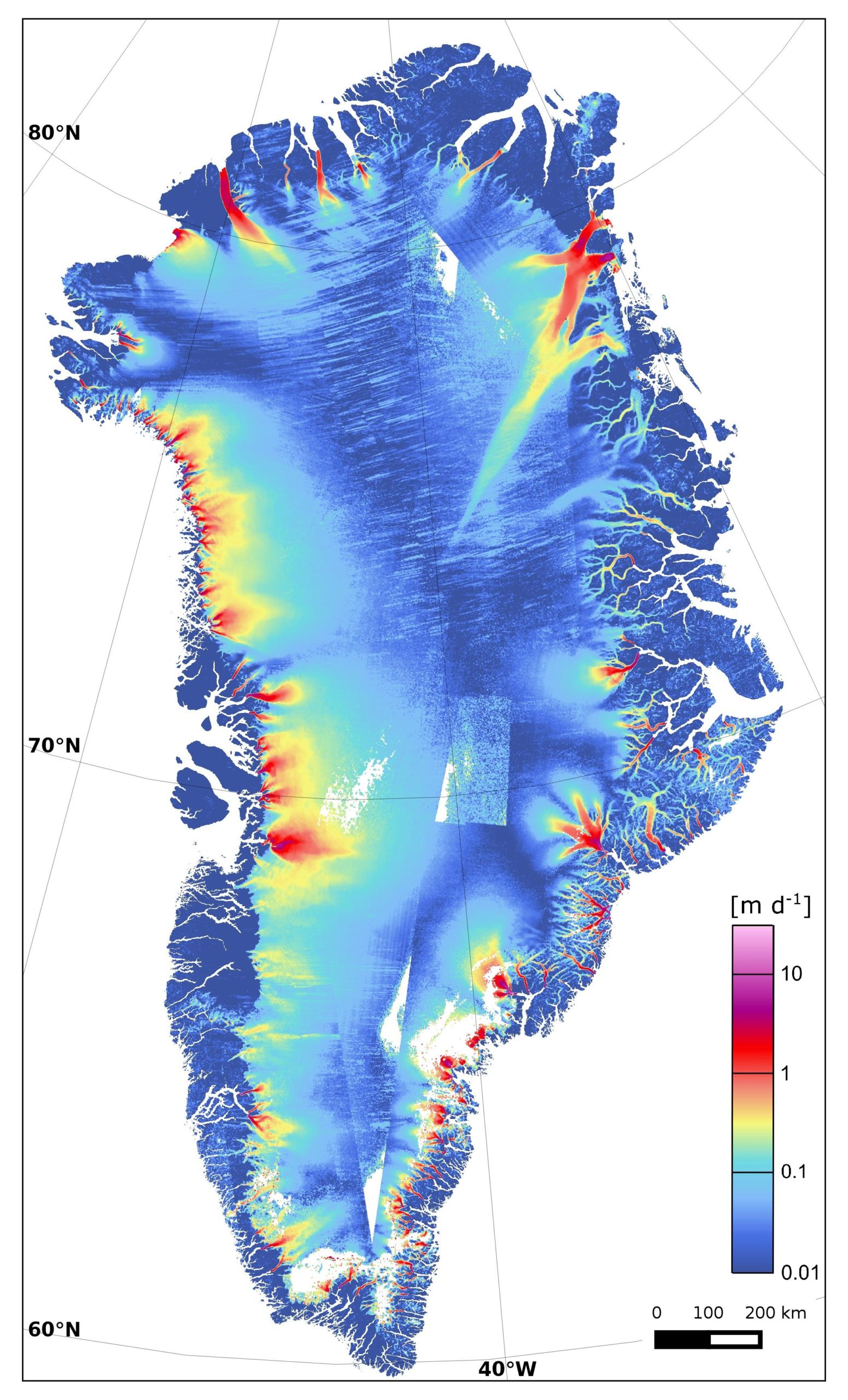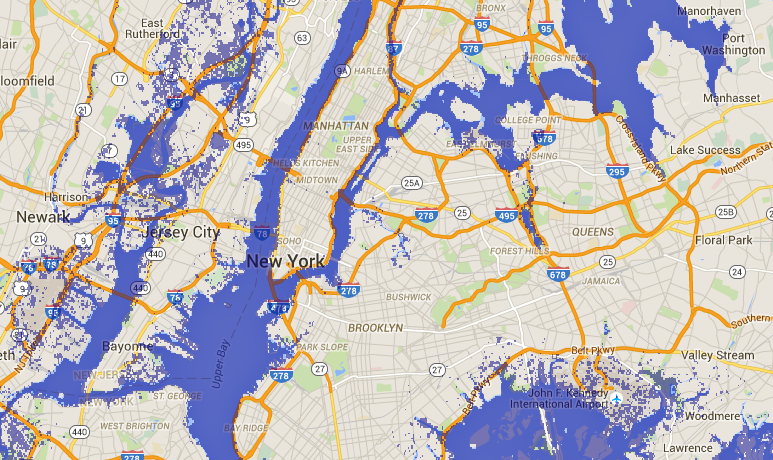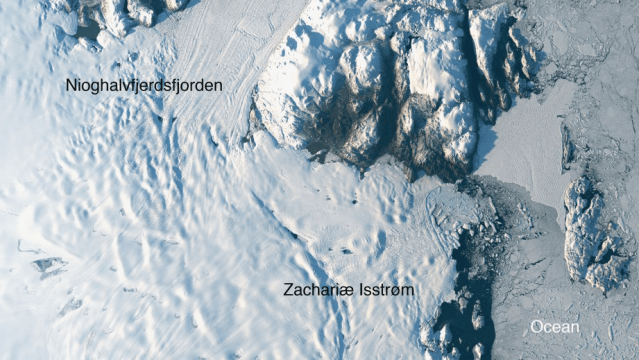The rapidly-melting glaciers of Greenland are moving faster than anyone thought — and this slow-motion crisis has the potential to change the world’s coastlines forever.
Over the past year, Greenland’s glaciers — and the vast network of lakes, rivers, and other features below them — have gotten a lot of attention. And for good reason: Not only are these glaciers melting at alarming rates, but the warm underwater currents beneath them are causing them to collapse at incredible speeds. In July, NASA launched a project called OMG (Oceans Melting Greenland) to track the incredible changes happening on this once-frozen sheet.
So far, that process has mainly taken place on the west coast of Greenland. But last week, as part of a special issue of Science on changing oceans, a group of scientists published a NASA-funded report detailing how the long-frozen east coast is on the move. More specifically, it’s been in “accelerated retreat” for three years now. Lead author Jeremie Mouginot tells Carolyn Gramling in Science today that Greenland is “like a boat that is taking on water from all sides.”
On the east coast, the team found that a huge glacier called Zachariæ Isstrøm actually broke loose from its underwater “stabilizing” shelf, or sill, back in 2012. The authors cite warmer currents below the surface, as well as warmer air temperatures, for the huge changes that will only increase over the next 30 years.
Now, Zachariæ Isstrøm is moving and melting very quickly. The glacier covers about 91,790 square kilometres (for comparison, the Greater Sydney region is only 12,367 square kilometres), and it alone could raise global sea levels by 46cm. “The retreat of these marine-based sectors is likely to increase sea-level rise from Greenland for decades to come,” the authors conclude. NASA elaborates:
All by itself, it holds enough water to raise global sea level by more than 18 inches (46 centimeters) if it were to melt completely. And now it’s on a crash diet, losing 5 billion tons of mass every year. All that ice is crumbling into the North Atlantic Ocean.

A map of Greenland’s ice sheet velocity, with Zachariae Isstrom in the northeast. The colours are based on metres of movement per day. ESA.
Just next door, there’s another melting glacier called Nioghalvfjerdsfjorden that could raise sea levels another 53 inches, totalling 99cm inches globally. What does that look like, independent of any other global sea rise? In New York, it would look like this, according to Geology’s sea level rise map:

Or New Orleans:

The Netherlands:

Or Venice:

If you want an even more visceral illustration of these changes, check out these before/after images. Keep in mind, these maps are based on sea level rise from these two glaciers alone, should they continue melting completely. Presumably, most cities would have time and funds to create infrastructure for mitigating the worst of the flooding.
But either way, the changes for coastal areas around the world will be indelibly altered. With the Paris Climate Talks only a few weeks away, the pressure has never been higher.
